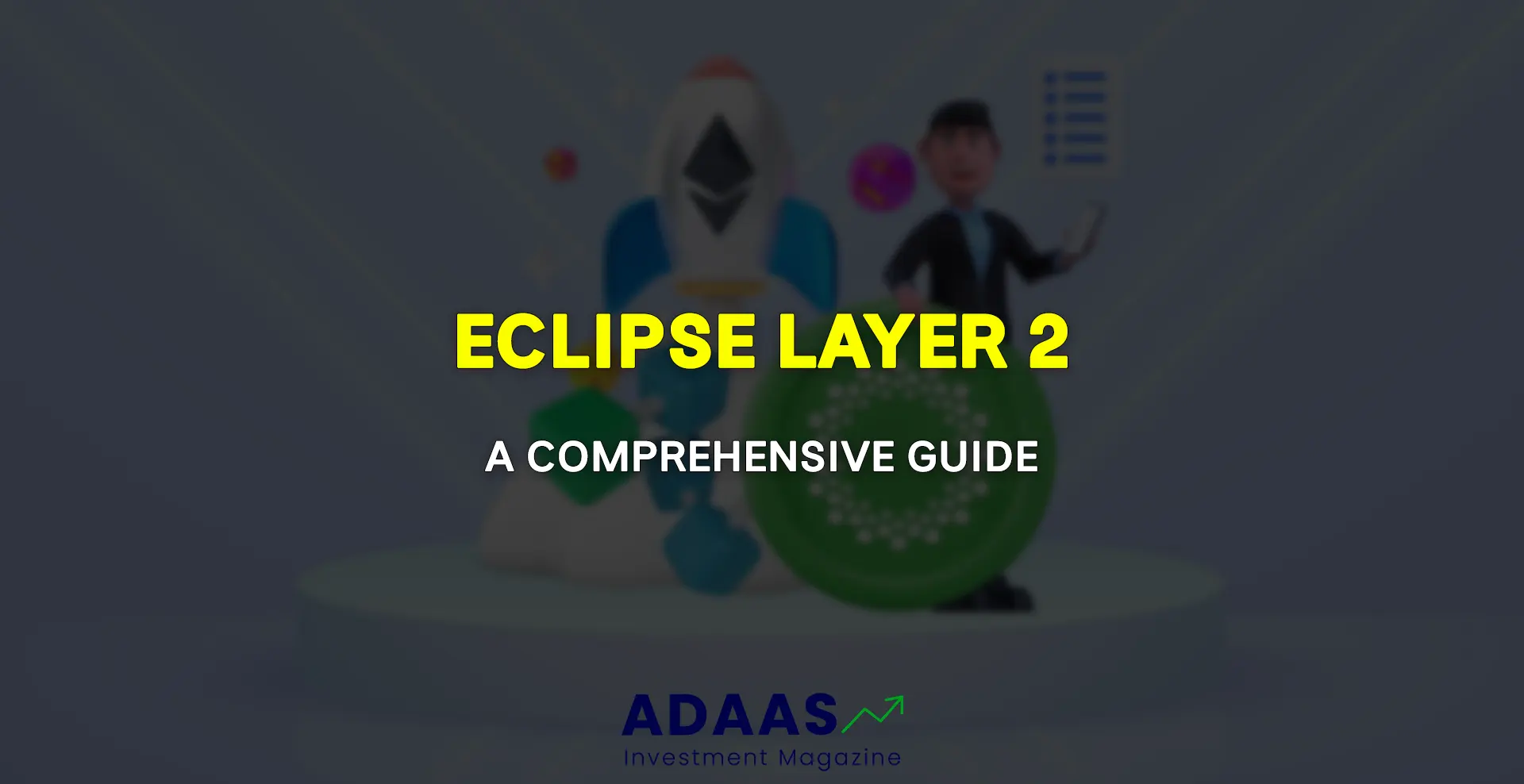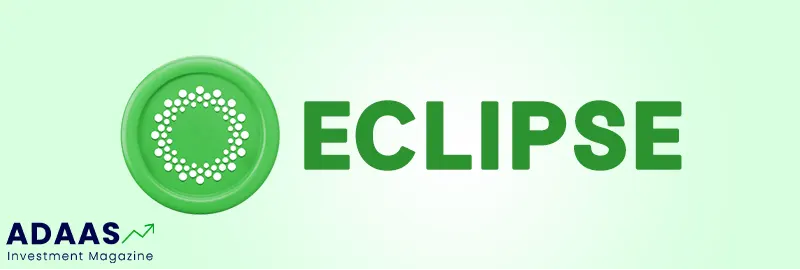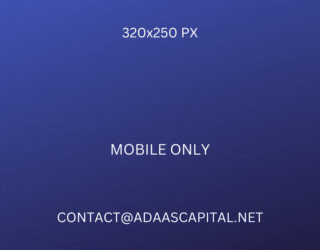Eclipse Layer 2 Platform Explained
Unleashing the Power of Efficient and Scalable Blockchain Solutions
By reading the article “What is Eclipse Layer 2 Platform” published in Adaas Investment Magazine, you will be fully familiar with the cutting-edge Eclipse Layer 2 Platform, a game-changer in the blockchain realm, and learn how it’s reshaping scalability, empowering developers, and enhancing user experiences. This level of familiarity can be enough when you need educational information about this topic.
Imagine a world where you can transact on your favorite blockchain applications instantly and affordably. No more waiting for hours or even days for your transactions to be processed, and no more paying exorbitant gas fees. This is the vision of Eclipse, a revolutionary new platform that is poised to usher in the next frontier in blockchain scalability.
What is blockchain scalability?
Blockchain scalability is the ability of a blockchain network to handle a large number of transactions per second (TPS) without sacrificing security or decentralization. Scalability is essential for the widespread adoption of blockchain technology, as it enables the development and deployment of real-world applications that can be used by millions of people.
How does Eclipse Layer 2 address blockchain scalability?
Eclipse addresses blockchain scalability by offloading computations from the main chain to a secondary layer, while still maintaining the security and decentralization of the underlying blockchain. This allows Eclipse to process transactions much faster and more efficiently than Layer 1 networks.
What are the benefits of Eclipse Layer 2?
Eclipse offers a number of benefits for both users and developers, including:
– Faster and more affordable transactions: Eclipse can process transactions significantly faster and more affordably than Layer 1 networks. This is ideal for micropayment applications and other low-value transactions.
– Enhanced security: Eclipse inherits the security of the underlying Ethereum network, while also incorporating additional security measures, such as fraud proofs and proofs-of-availability.
– Vibrant ecosystem: Eclipse has a rapidly growing ecosystem of applications and protocols, including Decentralized Finance (DeFi), NFT, and gaming projects.
The Future of Blockchain Scalability
Eclipse is a transformative platform that addresses the scalability challenges faced by Ethereum and other Layer 1 networks. It offers unparalleled speed, performance, and security, making it ideal for a wide range of use cases and applications.
In this post, you will learn about Eclipse, a revolutionary new platform that is poised to usher in the next frontier in blockchain scalability.
Table of Contents
What Is Eclipse Platform?
Eclipse is a Layer 2 platform that leverages the Solana Virtual Machine (SVM) to deliver unprecedented scalability and performance for blockchain applications. It is designed to address the scalability challenges faced by Ethereum and other Layer 1 networks, enabling faster and more affordable transactions for users and developers alike.
Architecture
Eclipse Layer 2 utilizes a modular architecture, comprising three key components:
– Ethereum Settlement Layer: This layer is responsible for processing and finalizing transactions, while maintaining the security of the Ethereum network.
– Solana Execution Layer: This layer leverages the SVM to execute transactions efficiently and at scale.
– Celestia Data Availability Layer: This layer ensures the availability of transaction data, even if the Solana Execution Layer goes offline.
Functionality
Eclipse works by offloading computations from the Ethereum main chain to the Solana Execution Layer. This allows Eclipse Layer 2 to process transactions much faster and more efficiently than Layer 1 networks.
To use Eclipse, users must first deposit their funds into an Eclipse wallet. Once their funds are deposited, users can transact on Eclipse applications without having to pay high gas fees.
When a user initiates a transaction on Eclipse, the transaction is batched together with other transactions and submitted to the Solana Execution Layer for processing. Once the transaction is processed, it is finalized on the Ethereum Settlement Layer.
Scalability Solutions
Eclipse Layer 2 addresses scalability issues in blockchain networks in a number of ways, including:
– Optimistic rollups: Eclipse uses optimistic rollups to bundle multiple transactions into a single batch, which is then processed and finalized on the Ethereum Settlement Layer. This significantly reduces transaction costs and improves throughput.
– State channels: Eclipse also supports state channels, which allow users to transact directly with each other off-chain, without having to pay on-chain gas fees. This is ideal for micropayment applications and other low-value transactions.
– Generalized proofs-of-availability: Eclipse uses generalized proofs-of-availability (GPAs) to ensure the availability of transaction data on the Celestia Data Availability Layer. GPAs are more efficient and scalable than traditional proofs-of-availability, making them ideal for high-performance blockchain applications.
Eclipse Layer 2 is a transformative platform that addresses the scalability challenges faced by Ethereum and other Layer 1 networks. It offers unparalleled speed, performance, and security, making it ideal for a wide range of use cases and applications.
Key Features and Innovations
Eclipse is a cutting-edge Layer 2 platform that offers a number of distinctive features and innovations, setting it apart from other solutions.
Modular Architecture
Eclipse is designed with a modular architecture, allowing developers to customize the platform to meet their specific needs. This ensures optimal performance and efficiency for a wide range of applications.
Unparalleled Scalability
Eclipse leverages the Solana Virtual Machine (SVM) to deliver unprecedented scalability and performance. The SVM is capable of processing over 50,000 transactions per second (TPS) at a fraction of the cost of the Ethereum mainnet.
Enhanced Security
Eclipse inherits the security of the underlying Ethereum network, while also incorporating additional security measures, such as fraud proofs and proofs-of-availability. This ensures that Eclipse is as secure as possible, while still maintaining its high performance and scalability.
Vibrant Ecosystem
Eclipse has a rapidly growing ecosystem of applications and protocols, including DeFi, Non-Fungible Token (NFT), and gaming projects. This thriving ecosystem provides users with a wide range of choices and allows developers to build on a solid foundation.
Recent Updates and Innovations
The Eclipse team is constantly innovating and improving the platform. Some recent updates and innovations include:
– Support for multiple virtual machines: Eclipse Layer 2 now supports multiple virtual machines, including the Sealevel virtual machine. This gives developers more flexibility and choice when building their applications.
– Integration with Polygon: Eclipse has integrated with Polygon, allowing users to easily bridge assets between the two platforms. This further enhances the usability and interoperability of Eclipse Layer 2.
– Launch of the Eclipse mainnet: The Eclipse mainnet launched in Q4 2023, making it available to the public for the first time. This is a major milestone for the Eclipse Layer 2 team and the community.
Eclipse is a transformative platform offering several distinctive features and innovations. It is the future of blockchain scalability, and it is poised to play a major role in the adoption of blockchain technology.
Use Cases and Applications
Eclipse is a versatile platform that can be used for a wide range of use cases and applications. Some of the most popular use cases include:
Decentralized finance (DeFi): Eclipse Layer 2 can be used to build and deploy high-performance DeFi applications, such as decentralized exchanges (DEXes), lending protocols, and yield aggregators. For example, the Eclipse Layer 2-based DEX, EclipseSwap, offers users fast and affordable transactions, as well as low trading fees.
Non-fungible tokens (NFTs): Eclipse Layer 2 can be used to create and mint NFTs in a more efficient and cost-effective manner. For example, the Eclipse Layer 2-based NFT marketplace, EclipseNFT, allows users to buy, sell, and trade NFTs with minimal gas fees.
Gaming: Eclipse can be used to develop and deploy blockchain-based games with faster transaction times and lower fees. For example, the Eclipse-based game, offers players a fast-paced and immersive gaming experience with no lag or downtime.
Enterprise: Eclipse can be used by enterprises to build and deploy private blockchain networks with enhanced scalability and security. For example, the Eclipse-based enterprise solution, EclipseEnterprise, provides businesses with a secure and scalable platform to develop and deploy their own blockchain applications.
Eclipse is a powerful platform that can be used for a wide range of use cases and applications. It is already being used by successful projects in the DeFi, NFT, gaming, and enterprise sectors. As the Eclipse Layer 2 ecosystem continues to grow, we can expect to see even more innovative and groundbreaking applications emerge.
Advantages and Benefits of Eclipse
Eclipse offers a number of advantages and benefits for both developers and users.
For Developers:
Unparalleled scalability: Eclipse is capable of processing over 50,000 transactions per second (TPS), making it ideal for building and deploying high-performance blockchain applications.
Modular architecture: Eclipse’s modular architecture gives developers the flexibility to customize the platform to meet their specific needs.
Vibrant ecosystem: Eclipse has a rapidly growing ecosystem of applications and protocols, providing developers with a solid foundation to build upon.
For Users:
Fast and affordable transactions: Eclipse offers significantly faster and more affordable transactions than Layer 1 networks. This is ideal for micropayment applications and other low-value transactions.
Enhanced security: Eclipse inherits the security of the underlying Ethereum network, while also incorporating additional security measures, such as fraud proofs and proofs-of-availability.
Improved user experience: Eclipse provides a more seamless and user-friendly experience than Layer 1 networks. For example, users can interact with Eclipse Layer 2 applications using their existing Ethereum wallets.
Impact on Transaction Speed, Cost-Effectiveness, and Overall User Experience
Eclipse has a significant impact on transaction speed, cost-effectiveness, and overall user experience.
Transaction speed: Eclipse is capable of processing over 50,000 TPS, which is significantly faster than Layer 1 networks. This means that users can experience instant and seamless transactions on Eclipse Layer 2.
Cost-effectiveness: Eclipse transactions are significantly more affordable than Layer 1 transactions. This is because Eclipse Layer 2 utilizes a number of cost-saving measures, such as optimistic rollups and state channels.
Overall user experience: Eclipse provides a more seamless and user-friendly experience than Layer 1 networks. For example, users can interact with Eclipse Layer 2 applications using their existing Ethereum wallets.
Eclipse offers a number of advantages and benefits for both developers and users. It is a scalable, secure, and user-friendly platform that is transforming the way we interact with blockchain technology.
How to Get Started with Eclipse
Getting started with Eclipse is easy and straightforward. Here is a step-by-step guide for both users and developers:
For Users:
1- Choose a WEB3 wallet. There are a number of wallets available, such as MetaMask and Rabby.
2- Bridge your assets to Eclipse. You can bridge your assets to Eclipse using cross-chain bridge platforms.
3- Start using Eclipse applications. Once you have bridged your assets to Eclipse mainnet, you can start using your favorite applications. For example, you can use Swap to trade DeFi tokens, or buy and sell NFTs.
For Developers:
1- Set up your development environment. Eclipse provides comprehensive documentation and a set of developer tools to help you get started.
2- Deploy your application to Eclipse mainnet. Once you have developed your application, you can deploy it to Eclipse using a deployment tool.
3- Start interacting with users. Once your application is deployed to Eclipse network, you can start interacting with users and providing them with a seamless and user-friendly experience.
Official Documentation and Resources:
- Eclipse documentation: https://docs.eclipse.builders/
- Eclipse website: https://www.eclipse.builders/
Eclipse is a powerful and versatile platform that offers a number of advantages and benefits for both users and developers. It is easy to get started with Eclipse Layer 2, and there are a number of official resources available to help you along the way.
Conclusion
Eclipse is a transformative platform that addresses the scalability challenges faced by Ethereum and other Layer 1 networks. It offers unparalleled speed, performance, and security, making it ideal for a wide range of use cases and applications.
Eclipse is already being used by successful projects in the DeFi, NFT, gaming, and enterprise sectors. As the Eclipse ecosystem continues to grow, we can expect to see even more innovative and groundbreaking applications emerge.
Here are some of the key points discussed in this article:
- Eclipse is a Layer 2 platform that leverages the Solana Virtual Machine (SVM) to deliver unprecedented scalability and performance for blockchain applications.
- Eclipse addresses scalability issues in blockchain networks by offloading computations from the main chain to a secondary layer.
- Eclipse offers a number of features and innovations, such as a modular architecture, unparalleled scalability, enhanced security, and a vibrant ecosystem.
- Eclipse is beneficial for both developers and users, offering faster and more affordable transactions, enhanced security, and an improved user experience.
Eclipse is poised to play a major role in shaping the future of blockchain. With its unparalleled scalability, performance, and security, Eclipse is the platform of choice for developers and users who are looking to build and deploy the next generation of blockchain applications.
Reinforcing the Transformative Potential of Eclipse
Eclipse has the potential to revolutionize the way we interact with blockchain technology. With its unparalleled scalability and performance, Eclipse can enable the development and deployment of real-world blockchain applications that can be used by millions of people.
For example, Eclipse can be used to build and deploy decentralized finance (DeFi) applications that offer fast and affordable financial services to users around the world. Eclipse can also be used to build and deploy non-fungible token (NFT) marketplaces that allow users to buy, sell, and trade NFTs with minimal gas fees.
In addition, Eclipse can be used to develop and deploy blockchain-based games that offer a fast-paced and immersive gaming experience to players around the world. Finally, Eclipse can be used by enterprises to build and deploy private blockchain networks with enhanced scalability and security.
Disclaimer: Cryptocurrency investments carry risks. Readers should conduct their own research and consider their risk tolerance before using any tools.

The End Words
At Adaas Capital, we hope that by reading this article you will be fully immersed in What Is The Eclipse Layer 2 Platform! You can help us improve by sharing this post which is published in Adaas Investment Magazine and help optimize it by submitting your comments.
FAQ
What is Eclipse platform?
Eclipse is an open-source Layer 2 platform that leverages the Solana Virtual Machine (SVM) to deliver unprecedented scalability and performance for blockchain applications. It is designed to address the scalability challenges faced by Ethereum and other Layer 1 networks, enabling faster and more affordable transactions for users and developers alike.
What is the EVM?
The Ethereum Virtual Machine (EVM) is a software platform that executes smart contracts on the Ethereum blockchain. It is a decentralized virtual machine that can run any program that is written in the Ethereum bytecode format.
What is Layer 2 scaling?
Layer 2 scaling is a term used to describe a variety of techniques that can be used to improve the scalability of blockchain networks. Layer 2 scaling solutions work by offloading some of the processing work from the main blockchain (Layer 1) to a secondary layer (Layer 2).
What is Solana Virtual Machine?
The Solana Virtual Machine (SVM) is a runtime environment that executes smart contracts on the Solana blockchain. It is a high-performance virtual machine that is capable of processing thousands of transactions per second.






